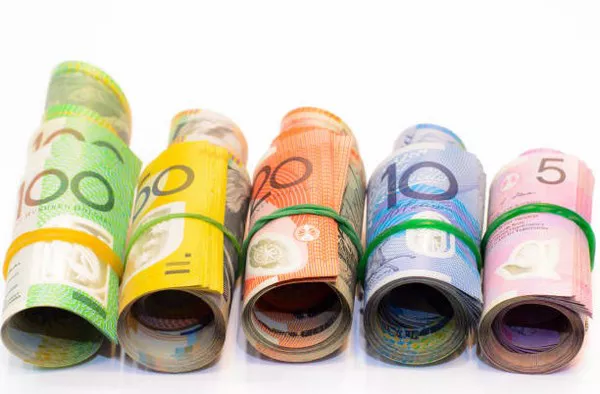Australia has a long and vibrant history of currency, with banknotes undergoing numerous changes in design, material, and security features over the years. As newer series of notes are introduced, older notes are gradually phased out, leaving many people with collections of outdated currency. Whether you have a few old notes stashed away in a drawer or a significant collection, it’s essential to know what you can do with them. Here, we explore various options for dealing with old Australian notes, ranging from practical to creative solutions.
Understanding the History and Value of Old Australian Notes
Old Australian notes can be categorized broadly into pre-decimal (before 1966) and decimal (after 1966) currencies. Pre-decimal notes are particularly rare and valuable to collectors, given their historical significance and limited availability. Decimal notes have also seen several changes, especially with the introduction of polymer notes in 1988, replacing the older paper versions.
Identifying Value: The first step in deciding what to do with old notes is to determine their value. The value of an old note depends on several factors, including rarity, condition, historical significance, and demand among collectors. Notes in pristine condition (uncirculated) typically fetch higher prices than those that are worn or damaged.
Exchanging Old Notes
Bank Exchange: One of the simplest and most straightforward options for dealing with old Australian notes is to exchange them at a bank. The Reserve Bank of Australia (RBA) guarantees the face value of all Australian banknotes issued since 1913, meaning they can be exchanged for current currency at their full face value. Most major banks offer this service, though it’s advisable to check with your local branch beforehand.
RBA’s Note Exchange Program: For those unable to visit a bank, the RBA offers a mail-in exchange program. This service allows individuals to send in old notes and receive an equivalent amount in current currency. It’s an excellent option for those living in remote areas or with significant amounts of old notes.
Collecting and Selling
Numismatic Value: Beyond their face value, old Australian notes can hold significant numismatic value, especially to collectors. Rare notes, such as those with unique serial numbers, printing errors, or historical significance (like the first polymer notes), can be highly sought after.
Auctions and Dealers: Selling old notes to collectors can be highly profitable. Auction houses and numismatic dealers specialize in trading rare currencies and can provide appraisals to determine the worth of your notes. Auctions, both online and offline, can attract competitive bidding, potentially yielding high returns.
Online Marketplaces: Platforms like eBay and specialized currency forums are popular places to sell old notes. These platforms allow you to reach a broad audience of collectors. However, it’s essential to accurately describe and photograph your notes to attract serious buyers.
Donating to Museums and Educational Institutions
Old notes can be valuable educational tools and historical artifacts. Donating your collection to a museum or educational institution can ensure they are preserved and appreciated by future generations.
Museums: Institutions like the Museum of Australian Currency Notes or the National Museum of Australia often accept donations of old currency. These notes can be used in exhibits to educate the public about the country’s monetary history.
Schools and Universities: Educational institutions may also welcome donations of old notes for use in economics or history courses. These donations can provide tangible examples for students learning about the evolution of currency.
Creative Uses for Old Notes
For those looking to do something more creative, old notes can be repurposed in various ways:
Art and Craft Projects: Old notes can be used in art projects, such as collages or framed displays. Artists often incorporate currency into their work to explore themes of value, history, and culture.
Decorative Items: Framed old notes can serve as unique decorative items. Whether displayed in a home office or living room, they can be conversation starters and add a touch of historical elegance.
Fashion Accessories: Some designers and DIY enthusiasts use old notes to create fashion accessories like wallets, bags, or jewelry. These items not only look distinctive but also carry a story.
Preserving Old Notes
If you decide to keep old notes, preserving them properly is crucial to maintain their condition and value:
Storage: Store notes in a cool, dry place away from direct sunlight to prevent fading and deterioration. Use protective sleeves or albums specifically designed for currency to protect them from handling damage.
Handling: Always handle old notes with clean hands or gloves to avoid transferring oils and dirt. Minimizing direct contact helps preserve the notes’ condition.
Insurance: If your collection is particularly valuable, consider insuring it. Many insurance companies offer policies tailored to collectors, providing peace of mind against loss or damage.
See Also How to Check Australian Banknotes for Authenticity
Conclusion
Old Australian notes are more than just outdated pieces of paper; they are artifacts that tell the story of Australia’s economic and cultural evolution. Whether you choose to exchange, sell, donate, repurpose, or preserve them, understanding their potential and handling them with care can ensure they continue to be valued. From the simplicity of exchanging them at a bank to the thrill of auctioning rare notes, there are numerous avenues to explore. By considering the various options, you can make informed decisions that best suit your interests and the legacy of these historical treasures.


